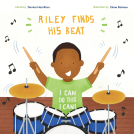
Is Anyone Listening?
What Animals Are Saying to Each Other and to Us
by Denise L. Herzing
This title was previously available on NetGalley and is now archived.
Send NetGalley books directly to your Kindle or Kindle app
1
To read on a Kindle or Kindle app, please add kindle@netgalley.com as an approved email address to receive files in your Amazon account. Click here for step-by-step instructions.
2
Also find your Kindle email address within your Amazon account, and enter it here.
Pub Date Nov 14 2024 | Archive Date Nov 01 2024
Talking about this book? Use #IsAnyoneListening #NetGalley. More hashtag tips!
Description
If you could pose one question to a dolphin, what would it be? And what might a dolphin ask you? For forty years, researcher and author Denise L. Herzing has investigated these and related questions of marine mammal communication. With the assistance of a friendly community of Atlantic spotted dolphins in the Bahamas, Herzing studies two-way communication between different dolphin species and between humans and dolphins using a variety of cutting-edge experiments. But the dolphins are not the only ones talking, and in this wide-ranging and accessible book, Herzing explores the astonishing realities of interspecies communication, a skill that humans currently lack.
Is Anyone Listening? connects research on dolphin communication to findings from Jane Goodall on chimpanzees, Dian Fossey on mountain gorillas, Cynthia Moss on African elephants, and others driving today’s exploration of possible animal languages. Although humans have long attempted to crack animal communication codes, only now do we have the advanced machine-learning tools to help. As Herzing reveals, researchers are finding fascinating hints of language in nonhuman species, including linguistic structures, vowel equivalents, and complex repeated sequences. By looking at the many ways animals use and manipulate signals, we see that we’ve only just begun to appreciate the diversity of animal intelligence and the complicated and subtle aspects of animal communication.
Considering dolphins and other nonhuman animals as colleagues instead of research subjects, Herzing asks us to meet animals as both speakers and listeners, as mutually curious beings, and to listen to what they are saying.
Advance Praise
“It's high time someone pulled together our current knowledge of interspecies communication, and no one is better placed to do that than Herzing.” -- Arik Kershenbaum, author of "Why Animals Talk: The New Science of Animal Communication"
“Dr. Doolittle famously desired to talk to the animals. Herzing has a better idea: stop talking long enough to listen to what the animals themselves are saying. Herzing has spent more than forty years doing just that, mostly while underwater with free-living dolphins. It might surprise us to learn that animals sometimes lie, and that some animals talk by changing colors. Listen to what Herzing has to say here. You’ll be amazed.” -- Carl Safina, author of "Beyond Words" and "Alfie and Me"
“By merging personal stories with scientific depictions, Herzing offers a compelling argument that captivates.” -- Con Slobodchikoff, author of "Chasing Dr. Dolittle: Learning the Language of Animals"
“A detailed, fascinating survey of the ongoing pursuit to understand the linguistic dimensions of nonhuman animals, told through the lens of Herzing’s decades of studying a community of dolphins in their native habitat. Particularly interesting is Herzing’s chronicle of her imaginative and pioneering use of technology to attempt to understand the many facets of dolphin communication. Required reading for anyone interested in building a bridge between humans and nonhumans.” -- Thomas I. White, author of "In Defense of Dolphins: The New Moral Frontier"
Available Editions
| EDITION | Other Format |
| ISBN | 9780226357492 |
| PRICE | $28.00 (USD) |
| PAGES | 232 |
Links
Available on NetGalley
Average rating from 14 members
Featured Reviews
 Bharath R, Reviewer
Bharath R, Reviewer
This is a very well written and refreshing book about non-human communication. While a substantial part of the focus is on Dolphins where the author Denise is personally involved, there are many examples and discussions about other animals as well.
We are learning more about non-human communication. As Denise says, for long we have evaluated animals against human communication standards, based on our belief of human exceptionalism. Our communication features requirements include - time displacement (ability to talk about the past, present & future), abstract idea transmission, combinatorial signals (recombinant parts of sound to form words), recursiveness (phrases within phrases) and others. Instead, we need a different standard for animal communication evaluation – animals have been far more aware and complex in their communications than we have been willing to give them credit for. Why is the ability to understand animals important? Denise quotes the philosopher Arne Naess who said "Nature has a right to exist for itself". We have shamelessly disavowed animals their rights.
There are excellent examples of how animals behave and communicate, as also understand and reach out to other species besides their own. Denise has many experiences with Dolphins – she was surprised when she was able to guide them to a boat to be photographed. Dolphins have been known to work with fishermen to catch fish. There are many others who have worked with different animals since many years. Jane Goodall and Dian Fossey’s work confirmed that chimps & gorillas are intelligent social animals. Cynthia Moss spent decades with elephants who use low frequency sounds for communication. Elephants in Sri Lanka became restive before the Tsunami struck, leading people up the hills. Dolphin whistles encode a good amount of detail, and especially useful for it as sound travels faster in water. There are also dialects to dolphin and many other animal communications. Monkeys can make predator specific calls, so can some other birds and animals who many times use complex loaded signals. Many animals can guess human intent based on our gaze. Animals have the ability to understand other species’ languages over time, though they communicate in their own way.
New technology is accelerating progress. I was surprised to learn that Neural networks and Machine Learning have been in use to study animal communication since quite long, though limited due to comparatively smaller data sets. There are many other challenges such as the need to isolate sound to individuals, correlate it to situations & behaviours. It is still unclear if animals use languages with grammar rules, but we might soon know.
The key is to treat animals as individuals deserving of respect & love, rather than objects or tools for humans. They deserve at least some of their habitat being left to them. For instance, Dolphins travel 10-20 miles in a day, have large network of friends and family, and teach young dolphins how to survive. They hence belong in the wild or need sanctuaries and it is cruel to isolate them for human gawking.
This is a well-researched and compassionate book which I much recommend. It is packed with interesting facts, learnings from research and the work being done.
Entertaining and approachable, this book focuses on just one part of animal behavior and shines a light on an aspect that hasn’t been well understood. Not for lack of trying but because we didn’t have the means to prove many of the theories. In a few short years, we have obtained the resources to study this in depth and Herzing shows how modern technology such as AI has changed his work. He has been working with wild dolphins for decades, and it is clear how much he loves and respects every one of them. The language is always clear and easy to understand, and the author uses examples from other animals to illustrate the similarities and differences amongst the ways we all communicate. The huge leaps in technology lately makes the author optimistic as to what’s to come and he shares this enthusiasm with his subjects and the readers.
I chose to read this book and all opinions in this review are my own and completely unbiased. Thank you, NetGalley/University of Chicago Press.
"I suspect it [the disconnect from considering the consequences of our actions to other species] comes from a deep disconnect with the idea that we are part of nature, not above it, and this disconnect has destructive consequence to the natural world." - Herzing
Rarely ever have I enjoyed a work of non-fiction as much as I have enjoyed Herzing's Is Anyone Listening. Rarely ever have I felt so connected with another species on this planet. I learned so much about the nuances of dolphin culture and communication like for instance the existence of dialects within different dolphin pods. Herzing posed many a question that made me think, that made me talk to my husband and my coworkers. I started to remember the names of some of the dolphins, giggled when Denise accidentally signaled to a dolphin that she was ready to mate and got concerned when the dolphins were suddenly no where to be found. Additionally, other than expected, this book also mentioned many other animals which are highly interesting such as elephants or squid, a species which is often overlooked or labelled 'disgusting'.
However, I also learned, and I loved the repeated inclusions of this statement in the book, that humanity is an egocentric species who values domination and control more than peace and symbiosis. Simply thinking of a human capturing a dolphin (or any being) for their own pleasure is actually rather disgusting. This book helped me understand just how wrong it really is. While I was emotionally aware, Is Anyone Listening has opened my eyes that much more to the obscene abuse of power with which humans approach the natural world.
The book also taught me that humans are impatient; often, when a task seems too difficult, too daunting, they move on. This is why dedicated researchers are such a blessing as they do not simply give up when the results are inconclusive or the technology faulty. Ultimately, it comes down to the fact that WE ASSUME, humans assume; and I am glad that there are people out there who don't just assume but try to know and understand.
Thank you to NetGalley, Denise L. Herzing and the University of Chicago Press for this ARC & thank you Denise + Team for respecting the dolphins' space and natural habitat.
 Reviewer 725763
Reviewer 725763
For forty years, the author has studied dolphin communication, pioneering two-way interactions with Atlantic spotted dolphins. This book explores the astonishing realities of interspecies communication, drawing parallels with other animal research and highlighting the potential for understanding animal languages using advanced technology.
This wonderful book presents animal communication in a new and revealing way. It’s a pleasure to read.
Thanks, NetGalley, for the ARC I received. This is my honest and voluntary review.
 Siddharth H, Reviewer
Siddharth H, Reviewer
A refreshing guide into the maze of nonhuman animal communication, written with a verve and passionate understanding particularly suited to a field on the brink of transformation. My full review can be found on Open Letters Review.
 Sophie S, Reviewer
Sophie S, Reviewer
I thought this was such a fascinating read. The book goes into great detail on animal communication, especially within the dolphin world, but also has the author’s own research experiences which enhance the reading experience. I loved how it also shone a light on other species’ communications, especially chimpanzees. I learnt a lot which is always a huge positive for a non fiction book and would definitely look into buying a physical copy!
 J. K, Reviewer
J. K, Reviewer
Thanks to the publisher and Netgalley for this eARC.
Denise L. Herzing's "Is Anyone Listening? What Animals Are Saying to Each Other and to Us" is a fascinating exploration into the world of animal communication, offering readers an intimate glimpse into the rich and complex ways animals interact with one another and with humans. Herzing, a renowned marine biologist with decades of experience studying dolphins, brings a wealth of knowledge and passion to this insightful book.
At the heart of the book is Herzing's pioneering research on dolphin communication. She provides a detailed account of her long-term study of a specific pod of wild dolphins in the Bahamas, sharing groundbreaking discoveries about their vocalizations, social behaviors, and interactions. Herzing's writing is accessible and engaging, making complex scientific concepts understandable and intriguing for readers of all backgrounds.
One of the book's standout features is Herzing's ability to draw parallels between animal communication and human language. She delves into the cognitive abilities of various species, from dolphins to birds to primates, highlighting the similarities and differences in how they convey information and emotions. Herzing's reflections on the ethical implications of her work add depth to the narrative, prompting readers to consider the broader significance of understanding and respecting animal communication.
The structure of the book is well-organized, with each chapter focusing on different aspects of animal communication and their implications for human-animal relationships. Herzing's personal anecdotes and firsthand experiences enrich the text, providing a vivid and immersive reading experience. The inclusion of photographs and illustrations further enhances the reader's understanding and appreciation of the subject matter.
Herzing's passion for her work is evident throughout the book, and her commitment to conservation and ethical research practices shines through. She advocates for a deeper connection between humans and animals, emphasizing the importance of listening to and learning from the natural world. Herzing's thoughtful and compassionate approach makes the book not only an informative read but also a call to action for greater empathy and environmental stewardship.
"Is Anyone Listening? What Animals Are Saying to Each Other and to Us" is a captivating and enlightening book that will appeal to anyone interested in animal behavior, communication, and the human-animal bond. Denise L. Herzing's expertise and enthusiasm make this a must-read for both science enthusiasts and those seeking a deeper understanding of the natural world. This book is a testament to the incredible intelligence and complexity of the animal kingdom and a reminder of the importance of listening to the voices of all living beings.


















